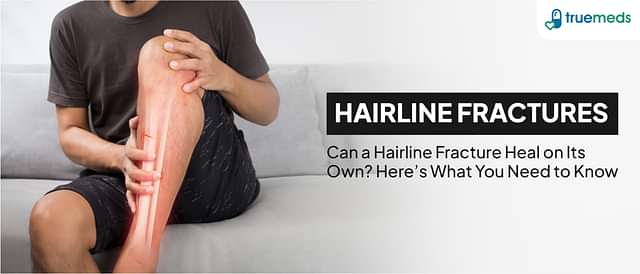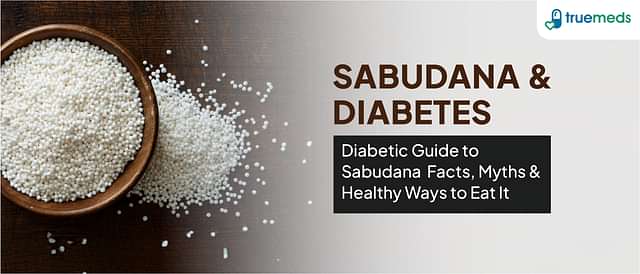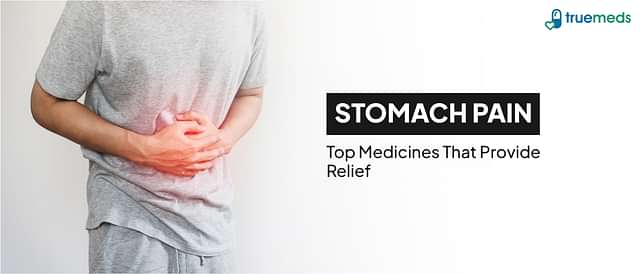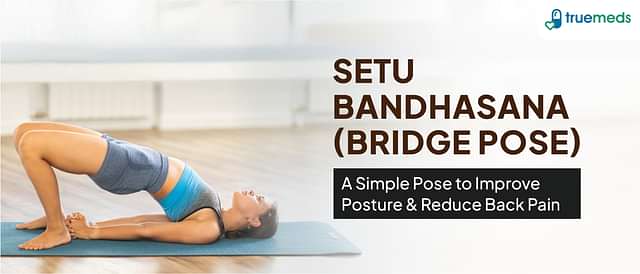First Aid For Sprains: Key Steps For Immediate Relief
Last updated on : 18 Mar, 2025
Read time : 9 min
Sprains! These seemingly simple yet painful injuries can catch us off guard at any time. Be it an evening run gone awry or a tumble on the stairs, when a sprain occurs, it’s essential to know how to react. Understanding the meaning and immediate first aid steps for treating sprains can significantly reduce discomfort and promote quicker healing. In this blog, we will delve into what a sprain is, its common causes, and how to treat a sprained foot at home.
What is a Sprain?
A sprain is an overstretched or torn ligament, which is the tissues that connect bones at a joint. They typically occur when sudden movements force a joint beyond its normal range of motion. This often happens due to sudden movements, falls, or sports injuries – imagine a twisted leg during football or a bad landing while jumping.
The areas most commonly affected are the ankles, knees and wrists. Pain, swelling, bruising and limited range of motion are typically observed symptoms of a sprain. In more severe cases, you might not be able to use the joint at all – this is when you know you’ve severely sprained your leg.
Common Causes of Sprains
From everyday activities to athletic pursuits, several situations can lead to a sprain. Here are some common causes:
- Falling: A sudden loss of balance can lead to awkward landings that stress the ligaments. You may end up with a sprained wrist or ankle from trying to catch yourself during a fall.
- Twisting or Pivoting: Activities that involve rapid changes in direction, such as dancing or basketball, can result in sprains. A quick pivot or sudden stop can lead to a twisted leg.
- Trauma to the Joint: Direct impacts or collisions during sports or physical activities can stretch or tear ligaments. A rough tackle during a football game, for instance, could cause a sprain.
- Walking on Uneven Surfaces: Walking or running on uneven terrain can cause missteps resulting in sprains, particularly in the ankles and knees.
- Improper Footwear: Shoes that do not provide adequate support or fit poorly can increase the risk of sprains. This is especially relevant in the context of sports where the right footwear can play a pivotal role in preventing injuries.
Types of Sprains
Sprains come in different types and can affect various parts of our body.
Classification by Severity:
Sprains can generally be categorised into three levels of severity:
- Mild (Grade 1): This type of sprain is caused by a slight stretching or tiny tears in the ligament. If you’ve twisted your leg and are experiencing mild pain and swelling, you might have a grade 1 sprain. Despite the discomfort, the joint typically remains stable and functional.
- Moderate (Grade 2): A grade 2 sprain indicates a partial tear in the ligament. The symptoms are more pronounced than in grade 1, with increased pain and swelling. You might also notice some instability in the joint, making it difficult to walk if it’s a leg sprain or grasp objects if it’s a wrist sprain.
- Severe (Grade 3): This is the most serious form of sprain involving a complete tear or rupture of the ligament. The joint becomes unstable and it can be extremely painful, often requiring medical intervention which could include surgery.
Specific Examples:
Sprains can occur in any joint but some are more common than others:
- Ankle Sprain: These are particularly common among athletes involved in sports like basketball or football which require jumping or sudden changes in direction.
- Wrist Sprain: Falling onto an outstretched hand is a common cause of a wrist sprain. It’s a frequent injury among cyclists and skateboarders.
- Knee Sprain: This usually happens due to sudden stops or changes in direction, often while playing sports. The ACL (anterior cruciate ligament) is particularly vulnerable.
- Thumb Sprain: If you’ve fallen while skiing or been hit by a ball while playing cricket or basketball, you might have experienced a thumb sprain.
Symptoms of a Sprain
If you suspect that you have sprained your leg or any other joint, look out for the following signs and symptoms:
- Pain: Pain at the site of the sprain is usually the first symptom to appear. It can get worse when you try to move the joint.
- Swelling: The injured area might swell up due to fluid accumulation as your body reacts to the injury.
- Bruising: You may notice some discolouration on your skin, which is caused by bleeding under the skin.
- Limited Range of Motion: You might find it hard to move the affected joint, which may feel stiff or unstable.
- Tenderness: The injured area is likely to be sensitive and painful to touch.
In severe cases, you may experience intense pain and will not be able to bear weight on the affected limb, indicating a severe sprain. In such cases, it’s crucial to seek immediate medical help.
Immediate Actions for First Aid
The RICE method is a widely accepted first-aid treatment for such injuries.
RICE (Rest, Ice, Compression, Elevation):
- Rest: Stop activity as soon as you feel pain. This helps prevent further damage to the injured area.
- Ice: Ice should be applied for 15-20 minutes every 2-3 hours for the first 48-72 hours post-injury. This reduces swelling and provides pain relief. Remember to wrap your ice pack in a cloth to avoid ice burn.
- Compression: Wrap the injured area with an elastic bandage to control swelling and provide essential support.
- Elevation: Raise the injured limb above the level of your heart wherever possible to assist in reducing swelling.
When to Apply Heat Instead of Ice:
While ice is beneficial immediately after an injury, heat can be helpful later in the healing process. However, you should avoid applying heat within the first 48 hours after a sprain as it can exacerbate swelling. After this period, heat may be applied to:
- Relax Tight Muscles: Heat can help loosen stiff muscles around the injured joint.
- Promote Blood Flow: Heat promotes blood flow to the area, aiding in the recovery process.
Specific Steps for Different Types of Sprains
Now that we’ve outlined general first aid for sprains, let us guide you through specific steps for different types of common sprains such as ankle, wrist or hand, and knee or leg sprains.
1) How to Treat an Ankle Sprain:
- RICE Method
- Elevate the foot above the heart level
2) Treatment for a Wrist or Hand Sprain:
- RICE Method
- Elevate the wrist and consider a splint for support
3) Managing a Knee or Leg Sprain:
- RICE Method
- Use over-the-counter painkillers to manage discomfort.
- Once initial swelling has subsided, engage in physical therapy exercises to rebuild strength and flexibility.
Prevention Tips
Preventing sprains is crucial, particularly for those who engage in sports or other physically demanding activities. Here are some simple tips to help you avoid sprains:
- Warm-Up and Stretch – Before you start any physical activity, always warm up and stretch your muscles and ligaments. This prepares them for the exertion that follows.
- Strength Training – Strengthen your muscles by incorporating strength-training exercises into your routine. This provides better support and stability around your joints.
- Use Proper Footwear – Always wear shoes that fit well and provide adequate support for your feet. If you’re playing a sport, it’s essential to use footwear specially designed for that sport.
- Be Mindful of Surfaces – Be aware of the surfaces on which you’re exercising or walking. Try to avoid uneven or slippery surfaces to reduce the risk of injury.
- Practice Good Technique – Whether you’re participating in sports or carrying out everyday activities, using the correct techniques can help prevent injuries like sprains. For instance, learning the correct way to jump, land, or pivot can significantly reduce your risk of spraining a joint.
- Stay Hydrated – Dehydration can lead to muscle cramps and fatigue, both of which increase your risk of injury. So, remember to drink plenty of water before, during, and after any physical activities.
- Listen to Your Body – If you start to feel any pain or discomfort during exercise, it’s crucial to rest immediately. Ignoring these warning signs can make some injuries worse.
- Balance and Coordination Exercises – Activities like yoga or tai chi can improve your balance and coordination while also enhancing stability and reducing the likelihood of falls.
Conclusion
Sprains are common injuries that can occur in various situations, from sports matches to simply walking down the street. By using the R.I.C.E. method (Rest, Ice, Compress, and Elevate), you can help reduce pain and promote healing in the event of a sprain.
Remember, it’s always better to prevent injuries before they occur. By being proactive in prevention and knowledgeable about first aid, you can maintain an active lifestyle while reducing your chances of experiencing sprains and other injuries. However, if any injury symptoms persist or cause concern, always consult a doctor for professional advice and treatment.
Frequently Asked Questions
Follow the RICE method (Rest, Ice, Compression, Elevation) and seek medical advice from your family doctor.
The sprain first aid includes resting the affected area, applying ice, using a compression bandage, and elevating the injury.
Healing times for sprains vary depending on severity, but generally, they may take 2 weeks to 3 months.
Yes, always consult your family doctor for any sprain treatment to avoid complications.
Yes, regular exercise and wearing protective gear during physical activities can help prevent sprains.
For organic relief, consider using arnica gel or consuming foods rich in anti-inflammatory properties like turmeric and ginger. Always consult your doctor before starting any treatment.
Disclaimer
Our healthcare experts have carefully reviewed and compiled the information presented here to ensure accuracy and trustworthiness. It is important to note that this information serves as a general overview of the topic and is for informational purposes only. It is not intended to diagnose, prevent, or cure any health problem. This page does not establish a doctor-patient relationship, nor does it replace the advice or consultation of a registered medical practitioner. We recommend seeking guidance from your registered medical practitioner for any questions or concerns regarding your medical condition.
Popular Articles
Recommended Articles
Recent Articles
Top-Selling Medicines:
...View more
Top-Selling OTC:
...View more
Subscribe
Registered Office Address
Grievance Officer
Download Truemeds

Contact Us
Our customer representative team is available 7 days a week from 9 am - 9 pm.
v3.7.5
Our Payment Partners



























































